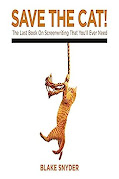When I was in high school, I took home economics for one year. My mother insisted. In fact, she made all three of her daughters take the class in turn, not because of the semester’s worth of cooking lessons, but because of the sewing semester. Her mantra was “if you can read, you can cook.”
Over the years, I have come to find that mantra is (mostly) true, once you consider the vagaries of individual cooking environments, like the toaster oven versus the microwave versus the full-size oven, as long as I avoid the “advanced” features most such appliances are decked out with. Our full-size oven has some convection baking features and timed cooking features that I am careful not to run afoul of. Baking my famous holiday rolls (so-called because I normally only take the time to make them at Thanksgiving and Christmas) at 350 degrees for 20 minutes won’t work if I accidentally use the convection bake setting. I’m still trying to figure out the cooking timer the oven came with; it’s just so much easier to use the “kitchen timer” feature on the microwave.
My minor cooking
challenges pale in comparison to my daughter’s. She has decided that she can
teach herself to cook without doing any reading whatsoever. My best guess is
she is using The Force. For example, she decides she wants to bake a cake. We
have enough cookbooks to provide her with the cake recipe of her choice, but
instead she goes to the pantry and just starts pulling out ingredients she
thinks might go together with abandon. The amazing part of this cooking process
is that 40% of the time, she still manages to produce something edible or even
better. The other 60% of the time, all she produces is a huge mess in the
kitchen that sooner or later I end up cleaning. I’m a chronic rule follower;
her process drives me crazy.
Our different approaches remind me of the two main schools of thought when it comes to mystery writing – pantsters v. plotters. Pantsters just start writing and at the end of their novel, often are as surprised as their readers will be to find out who the killer is. Plotsters carefully map out the course they want their novel to take, planning out the culprit, the clues along the way, the red herrings, and the road to take to the finish. Writers tend to see those two methods as mutually exclusive, but they’re not. There are times when a pantster who has written herself into a corner has to stop and plan her way out of the morass, and times when a plotster discovers that her characters have a mind of their own and drag the story off in a completely unexpected direction. As with most processes in life, there are positives and negatives for each method. So my challenge to you today is to vary your writing process up just a little and see where it takes you.
But if you think that means I’m going to invite my daughter into the kitchen any time soon, you have another think coming. At least until she proves to me that she can find the sink, faucet, and dishwasher without my help…


























